MIO posterior approach to the calcaneus
1. Indications
This approach is used for minimally invasive reductions and percutaneous fixation of displaced intra- or extraarticular calcaneal fractures. It is common for this approach to be undertaken when the calcaneal fracture is of a simpler classification.
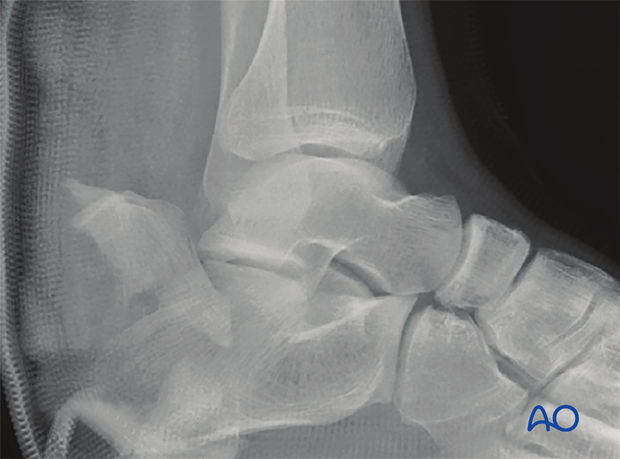
2. Anatomy
The lateral calcaneal artery is responsible for the majority of the blood supply to this area.
This approach respects the Achilles tendon and sural nerve.
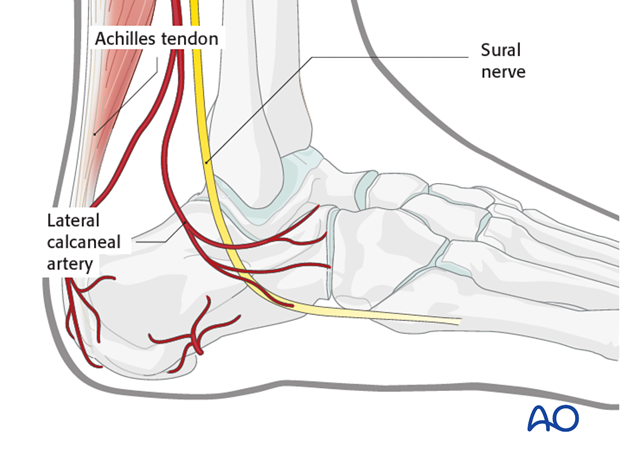
3. Timing of surgery
Correct timing of surgery is the most important factor in preventing local wound complication. Early surgery is mandatory because skin compromise will result if tension remains on skin at the back of the foot.
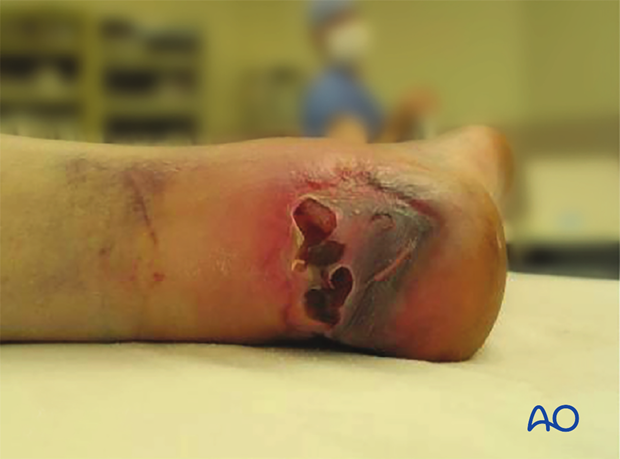
4. Incision
The landmarks for this incision are the lateral aspect of the Achilles tendon and the tip of the calcaneal tuberosity. The sural nerve is protected laterally.
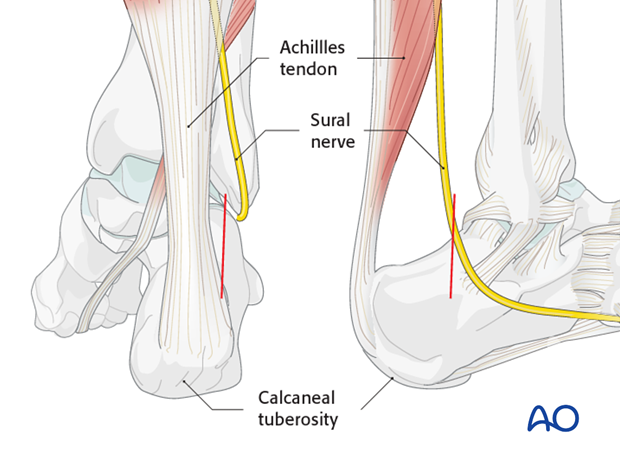
This incision is superficial and does not need to proceed deeply because the fracture is compromising skin.
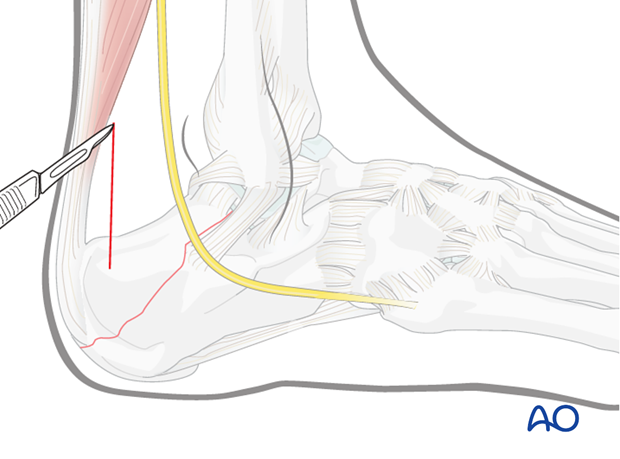
5. Wound closure
This small wound is easily closed and has a very low infection rate.













